Bull thistle
June 5, 2015
Cirsium vulgare (Savi) Tenore Asteraceae (Aster family)
Life cycle
Erect, spiny biennial.
Leaves
First-year leaves originate from a basal rosette, followed by an erect, branched, flowering stem in the second year. Seedlings have egg- to spatulashaped cotyledons and oval, oblong to spatula-shaped leaves with bumpy surfaces and marginal spines. Mature leaves are alternate, lance-shaped, deeply cut or lobed, with long, stiff spines. Leaves have coarse hairs above and soft, cottony hairs below.
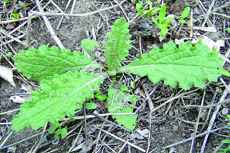
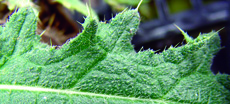
Bull thistle rosette (left). Coarse hairs on the upper leaf surface of bull thistle (right).
Stems
Spiny-winged, hairy stems elongate during the second year, often branched up to 7 feet tall.
Flowers and fruit
Red to purple, usually solitary flower heads consisting of only disk flowers are 1 to 2 inches wide and encircled by spine-tipped bracts. The seed is enclosed in a single-seeded, chilipepper-shaped, wind-disseminated fruit.
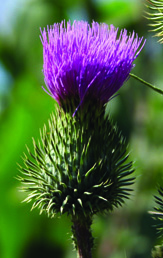
Bull thistle flower head.
Reproduction
Seeds.
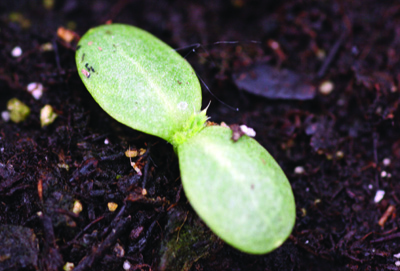
Bull thistle seedling.
Similar weeds
Canada thistle (C. arvense [L.] Scop.) Differs by having a prolific, patch-forming perennial nature with a deep, creeping root system; leaves with smooth, dark green upper leaf surfaces and irregularly lobed to crinkled, spiny margins; and smaller (less than 1-inch wide) pink to purple flower heads with spineless bracts.
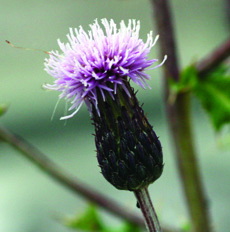
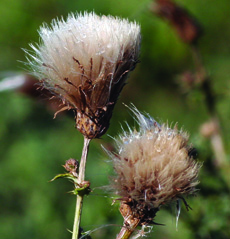
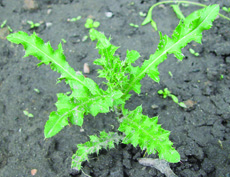
Canada thistle flower head (left). Canada thistle mature flower heads (middle). Canada thistle plant (right).
Print a PDF of this page: Bull thistle



 Print
Print Email
Email


